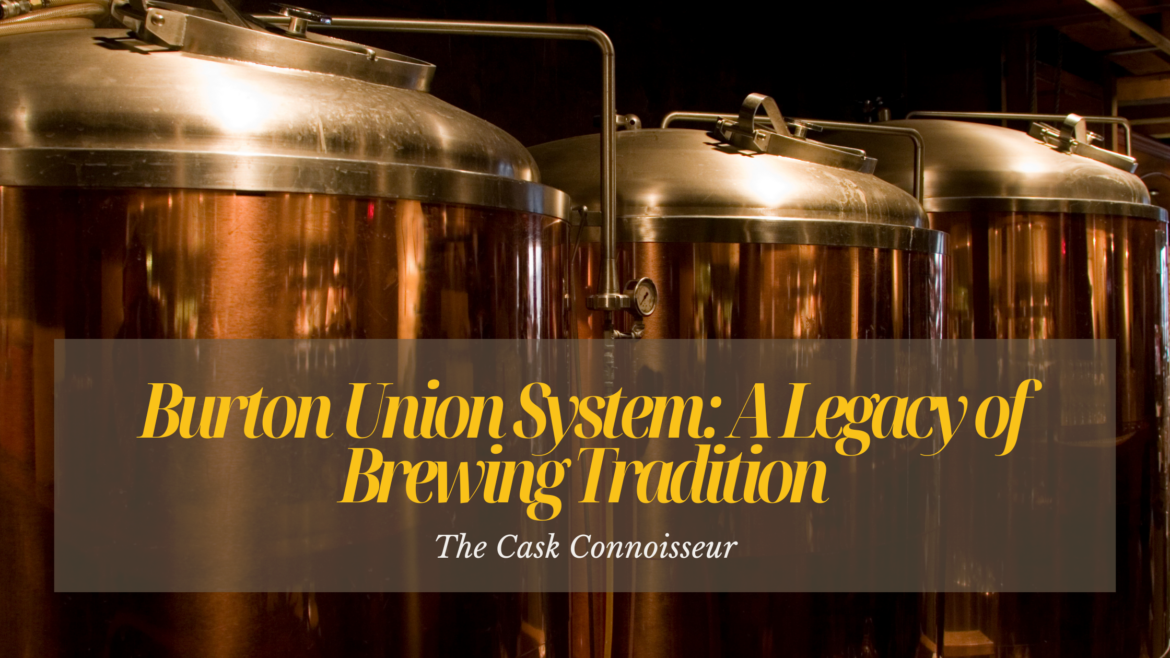When it comes to British brewing, the Burton Union System stands as a true testament to the craftsmanship and innovation that have defined the industry for centuries. Often referred to as a brewing relic or historical marvel, this traditional method has played a crucial role in shaping the taste and quality of some of the finest beers in the world.
In this post, we’ll explore the fascinating history, the intricate workings, and the enduring legacy of this unique work of art brewing method (that has brewed some cracking beers like Thornbridge’s 1838 Beer), and why it continues to captivate brewers and beer lovers alike.
The Origins of the Burton Union System
The Burton Union System traces its origins to the early 19th century, specifically the year 1838, when it was patented by Peter Walker, a brewer from the town of Burton-on-Trent. At that time, Burton-on-Trent was quickly gaining a reputation for its brewing excellence, largely due to the exceptional quality of its water – rich in minerals and perfect for brewing.
Peter Walker’s invention aimed to improve the fermentation process, particularly for pale ale, which was becoming increasingly popular. The system’s design was unique and would change the way beers were produced, particularly pale ales and India Pale Ales (IPAs), both of which became iconic during the Victorian era.
How Does the Burton Union System Work?
At its core, the Burton Union System is an elaborate and highly manual fermentation process that employs a series of interconnected wooden casks, often referred to as “unions.” These unions were carefully designed to allow yeast to ferment beer while offering better control over the brewing process compared to earlier methods.
The setup involves a large, wooden vessel for fermentation, with smaller, connected casks running along a track. The fermenting beer flows between the casks, with a unique system of vents and pipes that ensures optimal fermentation. One of the key features of the Burton Union System is its use of wooden casks rather than metal vessels, which allows the beer to breathe, promoting the formation of complex flavours that are impossible to replicate with modern equipment.
The key advantages of the Burton Union System include:
- Controlled Fermentation: The process allows brewers to manage yeast activity, preventing over-fermentation and helping to achieve a consistent product.
- Flavour Development: The use of wood enhances the beer’s flavour, adding unique nuances that can’t be achieved with stainless steel fermenters.
- Tradition & Heritage: Many brewers view this system as a direct link to their heritage, with each cask carrying centuries of tradition.
However, this process is extremely labour-intensive and requires careful attention to ensure that the wooden casks are properly maintained and that yeast health is managed correctly. In fact, many modern brewers have abandoned the system due to its high labour costs, but for those who continue to use it, the results are truly remarkable.
The Legacy of the Burton Union System
Although the Burton Union System has largely been replaced by more modern brewing methods, it still holds an important place in the hearts of beer lovers, particularly those who appreciate the rich history of British brewing. Many of the top breweries, such as Thornbridge Brewery, have revived the system in recent years, using it for their most prized beers.
The 1838 beer, for example, produced by Thornbridge Brewery, is a modern homage to the Burton Union System. The beer’s rich malt profile and unique taste can be directly attributed to the centuries-old process. For many beer enthusiasts, tasting a beer brewed using this traditional method is like taking a step back in time and experiencing the artistry that made Burton-on-Trent the epicenter of the brewing world in the 1800s.
It’s not just about nostalgia either. The system’s continued use by select breweries proves that there’s still something special about the Burton Union System, especially for brewers who are committed to crafting exceptional, heritage-rich beers that carry a piece of brewing history with every sip.
Why the Burton Union System Still Matters Today
In a world where brewing technology has rapidly advanced, it might seem odd that such an old-fashioned method still has relevance. But the truth is, the Burton Union System embodies a level of craft and care that is rare in today’s mass-production environment. For brewers who choose to use it, it’s not just about producing a great beer—it’s about paying tribute to the craft, tradition, and techniques that have been passed down through generations.
Using the Burton Union System allows brewers to create beers with depth, complexity, and an unmistakable sense of heritage. It’s a way of brewing that prioritizes quality over quantity, and for beer aficionados, there’s nothing quite like tasting a beer that has been brewed in such a time-honoured way.
The Burton Union System may be an old-world method, but it continues to leave its mark on the brewing world, influencing the beers we drink today. For beer lovers, it’s a reminder that sometimes, the best things in life are worth the extra effort—whether that’s brewing a beer with centuries-old methods or taking the time to appreciate the stories behind every sip.
So, the next time you crack open a pale ale or IPA brewed with the Burton Union System, take a moment to appreciate the tradition and history that went into crafting that beer. It’s not just about the taste—it’s about honouring a legacy that has shaped the world of brewing as we know it.





